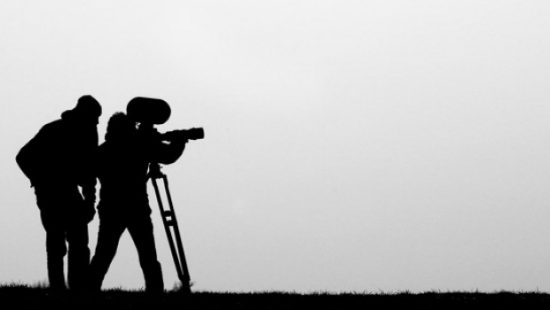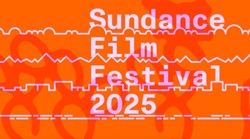How to Film a Documentary
Filming a documentary is very different to filming a typical movie as it is often educational and fact-based with different objectives. Also, when you shoot a documentary, you don’t have as much control over a significant portion of the footage you’re filming or the people involved, including their schedules, which makes it a difficult undertaking. In this article, we explore how to film a documentary successfully, including everything from establishing your premise to post-production.
Establish the Purpose of your Film
While traditional films have a point to them – most often to entertain as you follow the arc of a character – generally, they are not fact-based, or if based on actual events, spun for dramatic effect. That’s where a documentary is different; you’re not allowed to spin events. Everything you film must be entirely factual; otherwise, you’ll have a media and legal storm on your hands. At the beginning of the documentary making process, it’s essential you establish your subject and your film’s purpose.
When we say, establish the purpose of the film we don’t just mean your choice of subject. Instead, you need to determine what your audience will take away from your film and build your content around that aim. For instance, if you’re making a nature documentary, it’s likely you’ll want to highlight the growing impact of global warming or rising pollution levels. However, if you’re making a political documentary or war documentary, you will want people to see the subject through your eyes, which means its contents will need to highlight certain topics as a means to portray a particular viewpoint.
Typically, documentaries should spark opinion, challenge and encourage discussion.
Create a Filming Outline and Schedule
When filming a documentary, there are bounds of people and events you must work around to get the perfect content, so the first thing you need to do is build a schedule that works around your crew, participants, and any events you need to attend. Think of it like piecing together the perfect puzzle.
Typically, a documentary includes numerous interviews with experts on the subject matter or, sometimes, those at the heart of the topic, so you need to find out when they’re available to be interviewed. Remember, often, you will need to conduct several interviews to get the footage you want; relying on a single interview for captivating content is risky. As well as interviewing experts, you should aim to capture real-life footage of events that are relevant to your subject matter – for instance, for a political documentary, you may want to film protests to enhance the feeling that the topic is ever-present in society and, therefore, important. Spend some time researching events that are happening around the country and make sure you and your crew are filming in the thick of it.
As well as the bulk of your content, you will want to create shots that break up your interviews and real-life footage to captive your audience. You should also make time for recreations (as detailed below) and, of course, post-production; during which you will add a hefty chunk of your film’s value.
If you need an app for your filming schedule, Shot Lister is excellent.
Film Your Documentary
In a documentary, it is in post-production that you will add a chunk of the movie’s content. For instance, you may want a voice over as well as historical footage and, of course, music, which you will have to spend time sourcing and attaining permission for afterwards. However, when filming your documentary, there are three main types of footage you need to keep in mind, as detailed below.
Real Events
You want to include as much real footage in your documentary as possible, which means attending real events as they happen and capturing journalistic-style footage that positions your audience in the heart of the action. Real events can include anything from protests and trade shows to company events, meetings and even parties, depending on your film’s subject. When filming real events, typically, you will use mostly natural lighting and a Steadicam to ensure your shots are professional.
Recreations
To add dramatic effect to your documentary, you may want to incorporate a handful of recreations. For instance, if you were creating a documentary about telephone scams, you should recreate a similar scenario with actors so the audience can see first-hand how the scam played out in the victim’s home, which adds both insight and realism to your film. If possible, when incorporating recreations in a documentary, use a distinct editing style, such as a filter, that helps the audience to separate the recreations from real-life footage; otherwise, you risk confusing or, worse still, losing your audience.
Interviews
Possibly the most essential type of shot or sequence in a film, interviews are the ideal way to get across first-hand information from experts or those involved in the subject of your documentary relatively cheaply and very effectively. Providing you can find people willing to talk to you, which will take plenty of research, you can setup a filming space in a studio or even in the individual’s home or workplace. You will require minimal lighting and a still tripod setup, depending on the location. As mentioned, try and arrange more than one interview with your subject to capture the best footage.
Unsure about how to conduct an interview for a documentary? Explore Desktop Documentaries’ documentary interviewing tips. For a captivating documentary, you need to ask the right questions.
Using a Steadicam in a Documentary
Steadicam camera stabilisers are ideal for use in documentaries. Steadicams help to stabilise hand-held cameras so you can film fluid footage. While you’ll want to use a tripod to film interviews, you can use a Steadicam to shoot real events and recreations; hand-held footage helps your audience to connect with dramatic footage and any scenes where you want to position the audience at the heart of the action. Hand-held footage that uses a Steadicam not only requires minimal setup but also allows for quicker filming as you can move seamlessly with the action, which permits you to capture scenes you may have otherwise missed, which helps you to create a sense of pace and urgency in your film.
To film excellent Steadicam footage, you need to balance your Steadicam stabiliser first. Check out Momentum Productions’ video tutorial. Take your time to understand how a Steadicam works and which ones to use for filming.
Voiceover & Post-Production
Once you have captured all your footage – including real events, recreations and interviews – you need to edit the footage and tie it in with any found or historical footage you want to include. At the same time, you’ll want to hit the studio and record a voiceover for your film. Voiceovers are an affordable way to get information across to your audience quickly. If you want to include music in your film, make sure you purchase the rights to your music and never let it overpower the actual footage.
In Summary
Creating a documentary is an enormous undertaking, but you can create something unique, compelling and educational by adhering to our suggested steps. Make sure you have a clear premise for your documentary; if you’re thinking commercially, check you have an audience. When creating a documentary, you can’t plan as much as you can with traditional films, but you should still put together a realistic schedule to help make the process as seamless as possible. Try to include a mixture of interviews, real events and recreations in your film. To get excellent hand-held footage, use a Steadicam camera stabiliser. Aim to create a documentary that asks questions and raises discussion.










